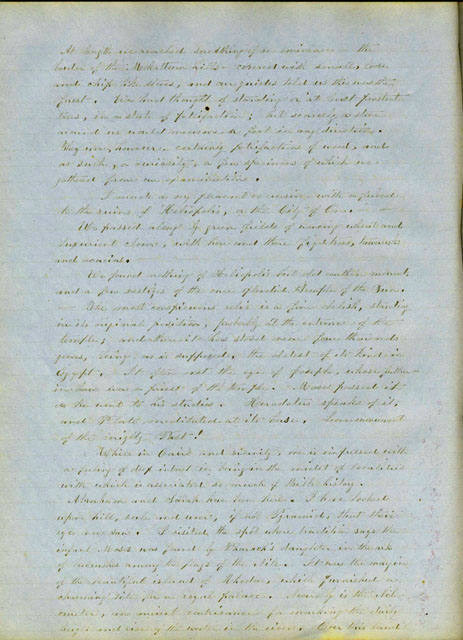Travel
Diary of Mrs. R.P. Eaton:
Europe,
Egypt, and Palestine, ca. 1857

I made a very pleasant excursion with a friend to the ruins of Heliopolis, or the City of On. We passed along by green fields of waving wheat and luxuriant clover, with here and there fig trees, tamarisks, and acacias.
We found nothing of the Heliopolis but old curtain mounds and a few vestiges of the once splendid Temple of the Seen.
The most conspicuous relic is a fine obelisk, standing in its original position, probably at the entrance of the temple; and there it has stood near four thousand years, being as is supposed the oldest of its kind in Egypt. It often met the eye of Joseph, whose father-in-law was a priest of the temple. Moses passed it as he went to his studies. Herodotus speaks of it, and Plato meditated at its base. Lone monument of the nightly Past!
While in Cairo and vicinity, one is impressed with a feeling of deep interest in being in the midst of localities with which is associated so much of Bible history. Abraham and Sarah have been here. I have looked upon hill and river, if not Pyramid, that their eyes once saw. I visited the spot where tradition says the infant Moses was found by Pharaoh’s daughter in the ark among the flags of the Nile. It was the margin of the beautiful island of Rhodes, which furnished a charming site for a royal palace. Nearby is the Nilometer, an ancient contrivance for marking the daily height and rise of the water in the river. Over this land